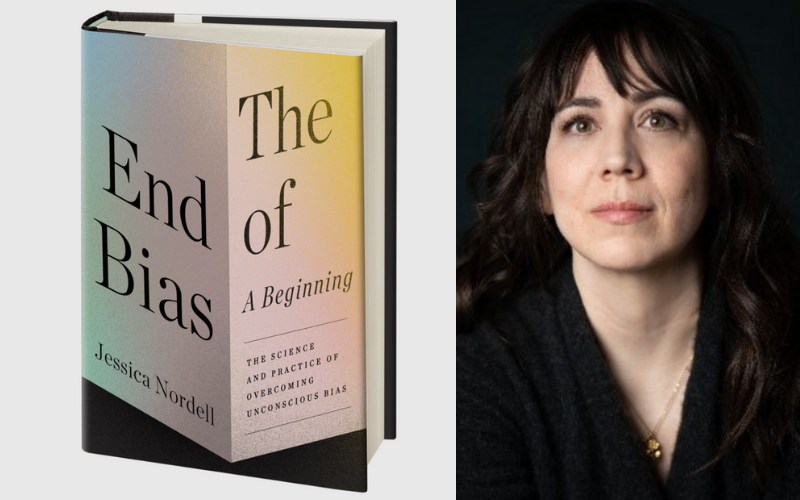Jessica Nordell
The End of Bias: A Beginning: The Science and Practice of Overcoming Unconscious Bias
Metropolitan Books, 2021
368 pages
When Jessica Nordell, the author of The End of Bias: A Beginning, was a recent college graduate struggling to become a freelance journalist, she spent months pitching an article under her own name to a variety of magazines. Nary a nibble. So, she sent the same pitch to the same magazines under the byline, J. D. Nordell. “Within hours, a response showed up in my in-box–the piece was accepted,” she recalls in the book’s introduction. Why? The magazine editors thought she was a man.
“That essay started my career,” she writes. “I saw up close how bias, and its flip side–advantage–are dynamic and penetrating forces, transforming their recipients from the inside just as they strike from the outside.” As a science writer, she has reported on many studies; most, she says, deal with problems, not solutions. But bias “has been probed and proven,” she says. “I wanted to discover how it can be overcome.” She notes in passing that there are numerous sources of bias, such as religion, ethnicity, ability, and sexual orientation, but concentrates on gender and racial bias, and the combination of the two.
The book is divided into three parts: “how bias works,” “changing minds,” and “making it last.” In the first, among other basic topics, she reviews the history of prejudice in the United States; examines implicit bias, which she calls the “prejudice paradox”–how White people who oppose racism unconsciously do racist things; and explores stereotyping.
The second section describes efforts to break the “habit” of stereotyping, including a section on police violence and efforts to forestall it with such techniques as sessions on mindfulness. “The precise structure of a just public safety organization remains to be seen,” she writes. “But the essential changes it must incorporate may still be insufficient to tackle the slippery problem of unconscious bias.”
In the third part of the book, Nordell describes the enormous and often tragic impact of bias in fields like health care and education. She notes that African American patients receive fewer medical interventions than White patients and even given less pain medication (because of the false belief they feel less pain). She shows how school systems disproportionately place White students in gifted programs and Black students in programs for students with learning disabilities. But she also finds evidence that bias can be overcome, citing the Massachusetts Institute of Technology’s Mechanical Engineering Department, which went from almost exclusively male to women in all ranks of the faculty.
Nordell concludes by looking back at the journey she took while writing her book. “When I began this book, I thought I was writing a work of science,” she says. But as she worked on it, “the original plan dissolved. The process became something deeper and more recursive, each new revelation sending me back to examine my own assumptions.” And she ends it, “Who might we become without our illusions and denials? We might become human, and trustworthy. We might all become free.”
-Review by Shelley Stanfield


